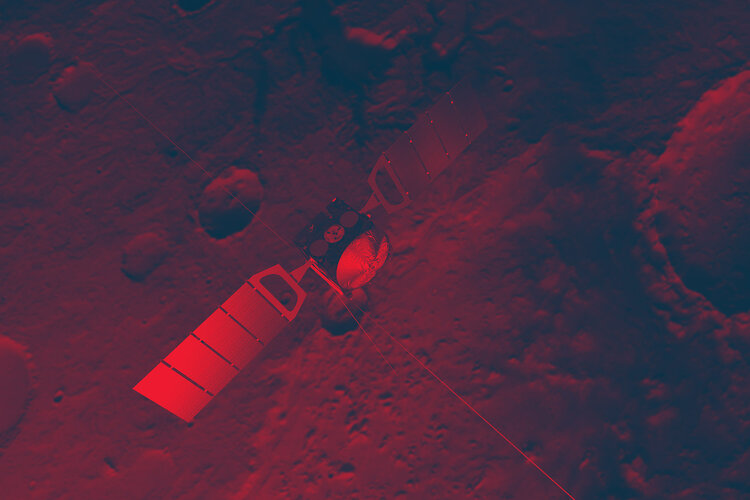Scientists and engineers still waiting to hear from Beagle 2 on Mars
Two attempts to communicate with Beagle 2 during the last 24 hours - first with the 76 metre (250 feet) Lovell Telescope at Jodrell Bank Observatory in Cheshire, UK, and then this morning with the Mars Odyssey orbiter - ended without receiving a signal. Despite this outcome, fresh attempts to scan for a signal from Beagle 2 will be made over the coming days.
Meanwhile, scientists and engineers are eagerly awaiting ESA's Mars Express spacecraft return close enough to Mars to try to establish contact with Beagle 2. This may be possible from 4 January 2004.
Mars Express was always intended to be the prime communication relay for Beagle 2, and the lander team is hopeful that a link can be established at that time if it has not already been achieved with Mars Odyssey.
"We need to get Beagle 2 into a period when it can broadcast for a much longer period," says Professor Colin Pillinger, Beagle 2 lead scientist. "This will happen around the 4 January after the spacecraft has experienced a sufficient number of communication failures to switch to automatic transmission mode."
Both Professor Pillinger and Professor David Southwood, ESA Director of Science, agreed that the best chance to establish communication with Beagle 2 would now seem to be through Mars Express.
At present, Mars Express is far from the planet and preparing to fire its engines for a major trajectory change that will move it into a polar orbit around Mars.
"We will have no satisfaction until we have a full mission" said Professor Southwood. "Today I'm certainly frustrated, but I'm still confident: let's wait now until the mothership will have the possibility to get in contact with her baby. With Mars Express we will be using a system that we have fully tested and understand."















 Germany
Germany
 Austria
Austria
 Belgium
Belgium
 Denmark
Denmark
 Spain
Spain
 Estonia
Estonia
 Finland
Finland
 France
France
 Greece
Greece
 Hungary
Hungary
 Ireland
Ireland
 Italy
Italy
 Luxembourg
Luxembourg
 Norway
Norway
 The Netherlands
The Netherlands
 Poland
Poland
 Portugal
Portugal
 Czechia
Czechia
 Romania
Romania
 United Kingdom
United Kingdom
 Slovenia
Slovenia
 Sweden
Sweden
 Switzerland
Switzerland

































